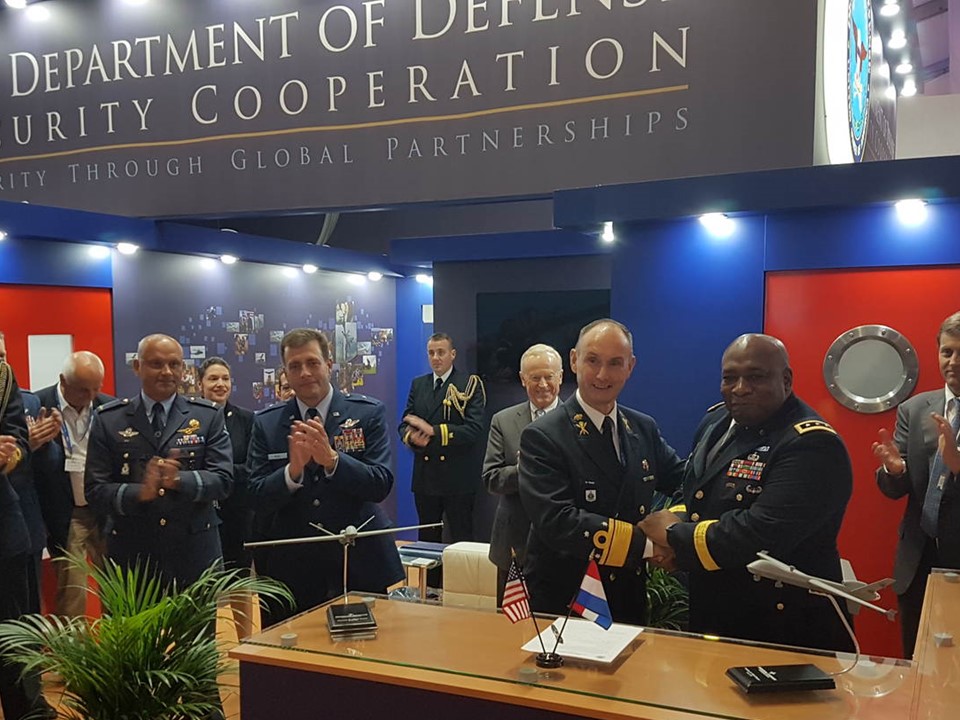Dutch government exploring to arm Reaper drones

In November 2019, the Dutch parliament demanded the Ministry of Defence to investigate whether four MQ-9 Reapers, which the Netherlands will receive in early 2021, should be armed.
In January 2020, State Secretary for Defence Barbara Visser wrote in a letter to parliament that the armament of the Reapers is “currently not on the agenda.” However, the Ministry of Defence does recognize “the operational benefits of arming the MQ-9 Reaper” and will continue to investigate the possibilities and costs of the armament of the drones.
André Bosman, MP from the conservative-liberal VVD, who filed the motion in December to request the government to investigate whether there is a need to arm the Reapers, stressed in an interview with Radio 1 that it is “very strange to have such an important weapon system flying around without armament. It is a missed opportunity.” Bosman argued that armed drones will be safer than unarmed drones, as the military will be able “to deploy the weapons if troops are in contact with the enemy.” Moreover, he said, an “F-16 is not going somewhere and throw bombs, this is thought about in advance, […] this will be no different with a Reaper drone.” This parliamentary initiative by Bosman, a former fighter pilot, is reflecting public pressure from the top-brass of the Dutch Air Force to arm the MQ-9 Reaper. Imagery shared online by the Air Force indicated that they expect that the Reaper will be armed in the future.
Most current and future armed drone users have not made their legal position and justification rules public. Repeated calls have been made by civil society groups, UN Special Rapporteurs, the UN Secretary General and the European Parliament to States to clarify their position on the use of armed drones, in particular their use for extrajudicial killings outside armed conflicts. Concerns are that these practices, responsible for the death of hundreds if not thousands of civilians and wounding many more, will become a normal counter-terrorism strategy. There are also broader concerns about the rapid proliferation of lethal drones that could lower the threshold of the use of force due to their low costs and low risks. Without clear positions, it will be difficult to verify if states’ legal and policy positions align with international law. States are for example obliged to investigate all allegations of civilian deaths. However, there is considerable evidence that states are not consistently and thoroughly investigating whether airstrikes have caused unlawful deaths or more broadly civilian harm.
According to Bosman, concerns that the Dutch Airforce will commit extrajudicial killings with armed drones like the US are not justified, as the Netherlands has stricter rules of engagement. Interestingly however, the Dutch government has yet to clarify its position on extraterritorial use of lethal force outside armed conflicts in order to push back against current practices by states such as the US, the UK, Israel, Turkey and other armed drone users.
Therefore, it is of utmost importance that the Netherlands publicly formulates their legal position on the use of armed drones, especially in counterterrorism operations, before arming them. The rules and procedures on preventing, mitigating and investigating all unlawful deaths and all civilian harm should be made public. Furthermore, the Netherlands should work on its transparency by declaring it will publicly share information on a case-by-case basis on which specific individuals and groups are when and where targeted. Lastly, an open discussion, as was held in Germany this month on potential armament of drones with parliament, academics and civil society is needed to bolster accountability, transparency and debate.

